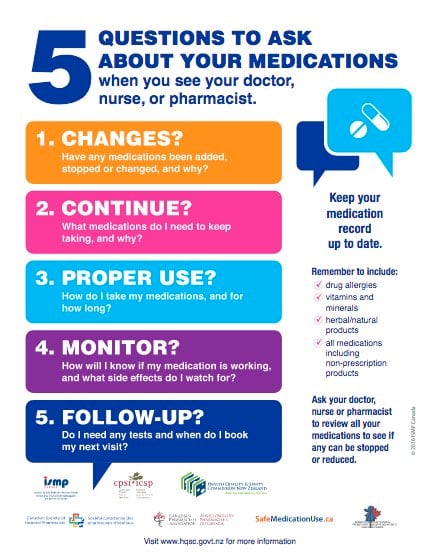Cerazette
Also known as desogestrel
Key points about Cerazette
- Cerazette contains the progestogen hormone, desogestrel.
- Cerazette is mainly used as a progestogen-only pill (or mini-pill) to prevent pregnancy.
- It may also be used to help manage the symptoms of endometriosis (unapproved use).
- Find out more about Cerazette.

Cerazette® tablets contain the progestogen hormone called desogestrel. Cerazette comes as a packet of 28 hormone pills. There are no ‘sugar’ pills.
- Cerazette is mainly used for contraception, as a progestogen-only pill (POP) or mini pill to prevent pregnancy. Read more about Cerazette for contraception.
- Cerazette can also be used to help manage the symptoms of endometriosis, such as painful periods and persistent pelvic pain. Read more about Cerazette for endometriosis.
- There is some evidence that Cerazette can be used as part of menopausal hormone therapy (MHT), together with oestrogen, for people with menopausal symptoms who have a uterus (womb). If you're using Cerazette for contraception, an additional progestogen would need to be added for endometrial protection. Read more about Cerazette as part of MHT.
Approval and funding in Aotearoa New Zealand
- Approval: In Aotearoa New Zealand, Cerazette is approved by Medsafe (New Zealand's agency for licensing medicines), for use as a contraceptive.
Cerazette is not approved for other uses such as endometriosis or as part of MHT. If your healthcare provider recommends this medicine for an unapproved use, they'll talk to you about the risks and benefits of this medicine so you have enough information to make a decision about using it ‘off-label’. Read more about unapproved medicines. - Funding: From 1 April 2025, Cerazette is funded by Pharmac (New Zealand's agency for funding medicine) for any use. Depending on your prescription, you'll be able to get up to 6 months supply of Cerazette.
Cerazette is used for contraception to prevent pregnancy. Cerazette is known as a progestogen-only pill (POP) or mini pill. It contains the hormone desogestrel, which is a progestogen. It doesn't contain oestrogen.
Cerazette compared to other POPs available in Aotearoa New Zealand
- Examples of other POPs available in Aotearoa New Zealand include Microlut® and Noriday®. Each POP has different progestogens, and this affects how they work.
- Cerazette works mainly by preventing ovulation (stops your ovaries releasing an egg). This makes it more effective at preventing pregnancy, compared with other POPs. It also causes changes in the lining of your womb (uterus) so there’s less chance a fertilised egg will attach to it.
- Cerazette has a 12-hour window for taking the pill after the usual time. This offers more flexibility for people who sometimes forget to take their pill on time. The window for most other POPs is only 3 hours.
How to take Cerazette for contraception
- Take 1 tablet every day (there are no ‘sugar’ pills and no breaks).
- Start on the first day of your period – it starts working immediately.
- If you start at any other time during your menstrual cycle, it will take 48 hours to start working so, to be safe, you need to use additional contraception (eg, condoms) or not have sex for 48 hours (2 days) after starting.
- Cerazette must be taken within 12 hours of the same time every day.
If used correctly, the progestogen-only pill is more than 99% effective in preventing pregnancy. This means that fewer than 1 in 100 people who take it for contraception will get pregnant in 1 year. In real life use about 8 in 100 people will get pregnant in a year because people sometimes forget to take it each day – which makes it 92% effective.
Missed pill
- A 'missed' dose is when more than 12 hours have passed since your last Cerazette pill. It may not work properly if you miss a pill.
- If you are more than 12 hours late taking your pill, take it as soon as you remember and continue taking your pill each day. This may mean taking 2 pills in one day. You will also need to use condoms or not have sex for the next 48 hours, until you have taken 3 consecutive pills. After that, Cerazette will be effective again.
Vomiting or diarrhoea
Cerazette may not work properly if you vomit within 2 hours of taking the pill or have ongoing diarrhoea (runny poo). This can stop the pill from being absorbed properly. Here is some guidance on what to do.
- Vomiting: If you vomit within 2 hours of taking the pill, take another. If you don't take a replacement pill within 12 hours of the usual time, use condoms or avoid having sex until you have been taking Cerazette for 48 hours (eg, you've taken 3 consecutive pills).
- Diarrhoea: If you have ongoing diarrhoea lasting more than 24 hours, use condoms or avoid having sex until you have been taking Cerazette for 48 hours (eg, you've taken 3 consecutive pills).
Contact your doctor, nurse, pharmacist or call Healthline 0800 611 116 for advice if you:
|
If you're breastfeeding
It's safe to take Cerazette when you're breastfeeding. It doesn't affect breastmilk production. If you've just had a baby, you can start taking Cerazette straight away. If you start it more than 3 weeks after having a baby, you need to use additional contraception (eg, condoms) or not have sex for 48 hours (2 days) after starting.
For more detailed information on how to take Cerazette for contraception, see progestogen-only pill (POP).
Endometriosis is a condition where tissue similar to the lining inside your womb (uterus) starts to grow in other parts of your body such as your ovaries, bowel or bladder. The most common symptom of endometriosis is pelvic pain, which can have a big impact on your life. Read more about endometriosis.
Cerazette is a hormonal therapy used to help manage the symptoms of endometriosis such as painful periods and persistent pelvic pain. Because Cerazette reduces or stops periods, it can slow or stop the womb lining (endometrium) from growing. This can make bleeding lighter, less frequent or stop altogether and may help to reduce pain.
How to take Cerazette for endometriosis
- The usual dose is 1 tablet daily. Some people may be prescribed 2 tablets daily.
- Start on the first day of your period.
- Take Cerazette at about the same time each day.
- Take Cerazette every day (there are no ‘sugar’ pills and no breaks).
As you approach menopause, changes in oestrogen levels can cause symptoms such as hot flushes, vaginal dryness, and mood and sleep changes. Menopausal hormone therapy (MHT) can help to ease symptoms.
If you have a uterus, taking oestrogen alone can cause thickening of the uterus lining (endometrium) which can increase the risk of endometrial cancer. Taking progestogen with oestrogen protects the endometrium from thickening and therefore reduces the risk of cancer. Read more about menopause and menopausal hormone therapy.
Cerazette contains the progestogen hormone, desogestrel. There is some evidence for the use of Cerazette together with oestrogen, as menopausal hormone therapy, for people with menopausal symptoms who have a uterus (womb).
- Studies show that 2 Cerazette tablets once daily (desogestrel 150 micrograms) may be effective as the progestogen component of MHT for some women.
- There is a lack of evidence to show that taking 1 Cerazette tablet daily on its own is enough for endometrial protection. If you are using Cerazette for contraception and MHT, an additional progestogen would need to be added.
Like all medicines, Cerazette can cause side effects, although not everyone gets them. The most common side effect is irregular bleeding. This is a nuisance but is not dangerous. Often side effects improve as your body gets used to the new medicine.
| Side effects | What should I do? |
|---|---|
|
|
|
|
Read more about medicines and side effects and reporting a reaction you think might be a side effect.
Cerazette(external link) Medsafe Consumer Information, NZ
Brochures
Medicines and side effects [PDF, 91 KB] Healthify He Puna Waiora, NZ, 2024
5 questions to ask about your medications(external link) Health Quality and Safety Commission, NZ, 2019 English(external link), te reo Māori(external link)
References
- Desogestrel(external link) New Zealand Formulary
- New Zealand Aotearoa’s guidance on contraception(external link) Ministry of Health, NZ, 2020
- Diagnosis and management of endometriosis in New Zealand(external link) Ministry of Health, NZ, 2020
- Endometriosis – diagnosis and management(external link) BPAC, NZ, 2021
- HRT preparations and equivalent alternatives(external link) British Menopause Society, UK, 2022
- Pharmac funds new oral contraceptive pill(external link) Pharmac, NZ
Brochures

Medicines and side effects
Healthify He Puna Waiora, NZ, 2024

Health Quality and Safety Commission, NZ, 2019 English, te reo Māori
Credits: Sandra Ponen, Pharmacist, Healthify He Puna Waiora. Healthify is brought to you by Health Navigator Charitable Trust.
Reviewed by: Dr Michelle Wise FRANZCOG; Angela Lambie, Pharmacist, Auckland
Last reviewed:





